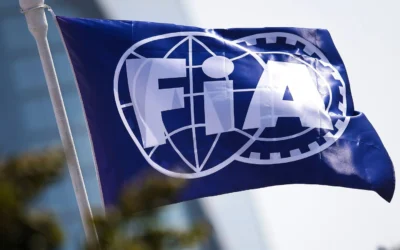As the final year of this generation of F1 cars approaches, one question remains – is taking a ‘technical’ risk work the pay off? Specialists suggest that being aggressive in development is necessary – assuming you avoid unwanted side-effects. This is something even the mighty Red Bull have failed in.
24 races in 10 months are too many to produce an ‘all-rounder’ car that doesn’t have certain trade-offs. McLaren has made it clear that its attempt to evolve in 2025 requires risks. Red Bull opted for the same approach heading into last year – even if Newey was not completely in agreement.
Ferrari’s 677 project will have a new concept. As revealed by Vasseur, 99% of last season’s parts will be modified. However, this does not mean their 2025 challenger’s changes will be obvious to the naked eye.
The changes underway at Maranello are mainly focused on fundamentals. Ferrari’s floor, cockpit, and the arrangement of the radiant packs must have been revised.
We should expect a more extreme 677 in the most visible areas and modifications in the less visible ones. For example, the 2025 floor design was already quite advanced in November – compared to the experimental one used at the end of the season . As it stands, the feedback suggests the direction being taken is a positive one.
Ferrari 2025: Does it make sense to change the entire front end ?
The 2025 world championship presents a golden opportunity for those who start off on the right foot. However, redesigning Ferrari’s mechanical platform may require a process of understanding to unlock the potential seen in the wind tunnel.
The front suspension of these cars, combined with the wing, completely changes the approach and conditioning of the flows around the bodywork .
It is a job that arguably has a greater impact than in the past, especially as these cars reach an extreme level of sensitivity. Aerodynamicists must play on a razor’s edge.

Ferrari’s switch to a pull rod geometry has important aerodynamic effects. This could allow for opportunities that have already been successfully tested .
It could be a coincidence, but recent Champions Red Bull and McLaren are both projects that worked on solution. In the technical era led by Cardile, the F1-75 was one step away from homologation, only for the team to pursue a more conservative direction.
This choice was defended by the technicians, but indirectly slowed down the design of the front axle a little. Ultimately, this decision made it difficult to unlock performance.
After a total change of aerodynamic concept, last year’s Ferrari was 95% different from the 2023 car. This difference, as Vasseur revealed, will be even more powerful today. Partly thanks to the package introduced in Imola, the SF-24 was a good car in the first part of the season.
It was consistent and predictable, largely because it was gentle on the tires. However, the failure of Barcelona’s updates certified that the mechanics were no longer adequate to push the platform forward.
The 2025 project has a clear development advantage over itself compared to last winter.
Despite the overly prescriptive regulation and the cost cap, aerodynamics have been more important than ever. It is no coincidence that more technical responsibility has passed to those who can free up ideas. Prodromou, after the exit of James Key, had a more direct impact on the decisions at McLaren, while Marshall was entering the scene.
Ferrari’s aerodynamics chief, Diego Tondi, took more power after the exit of Cardile, assuming the responsibility of quickly changing pace for 2025.
It is no coincidence that one of the first decisions was to put the inverted tie rod suspension in the tunnel. After an equal comparison, the sessions were able to confirm the progress with different geometry.
At that point, it was possible to work differently on the look. The sidepods should have been moved back and tapered, the slides towards the diffuser redesigned.
Traction was not a strong point of the SF-24 as temperatures varied. Overall, this area did not satisfy the technicians at Ferrari – and they will move towards a new rear suspension. From the range of wings available, the Scuderia will try to obtain specifications that produce less drag.
 Obviously it will always depend on the level of competition, it is about advancing 1 tenth per month (limiting the misfires) beyond the expected gain from one model to another.
Obviously it will always depend on the level of competition, it is about advancing 1 tenth per month (limiting the misfires) beyond the expected gain from one model to another.
If the track confirms the data, Ferrari engineers estimate that the misstep of last year’s Barcelona updates (which compromised progress for 2 months) should be erased.
At least for the start of the season, there are no restrictions in terms of flexibility of the wings. This is not a surprise – otherwise Maranello would not have introduced a new specification of front wing at the end of the season.
This component will be further updated following the development trend started last season in Austin.





